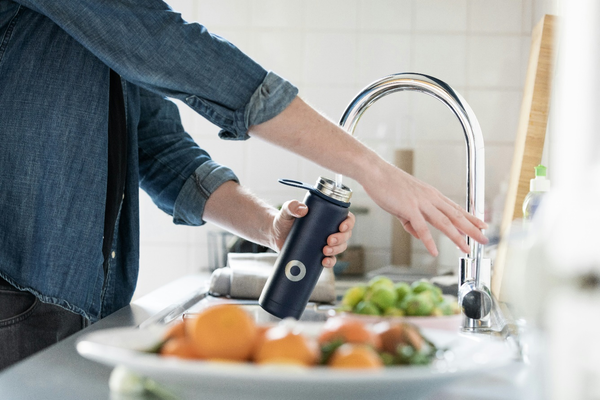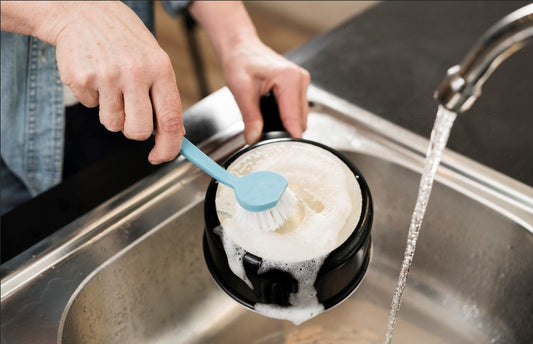
Hydration is crucial for maintaining overall health, aiding in various bodily functions such as regulating temperature, keeping joints lubricated, and delivering nutrients to cells. Reusable water bottles play a significant role in promoting consistent hydration by providing a convenient and environmentally friendly means of carrying water with you throughout the day. Unlike single-use plastic bottles, which contribute to environmental pollution and waste, reusable bottles reduce plastic usage, supporting sustainability efforts. Moreover, they can keep water cold or hot for extended periods, encouraging more frequent consumption and helping individuals meet their daily water intake needs more easily. By choosing a reusable water bottle, individuals not only make a healthier choice for themselves but also contribute positively to the environment.
Reusable water bottles come in various materials, each offering distinct advantages based on users’ needs and preferences. These materials include stainless steel, glass, plastic, copper, and ceramic.
Stainless steel bottles are durable, do not leach chemicals, and are excellent at maintaining the temperature of liquids.
Glass bottles are chemical-free, do not absorb tastes or odours, and are easy to clean, though they can be fragile.
Plastic bottles are lightweight and durable, but it's crucial to choose BPA-free options to avoid potential health risks.
Copper bottles have antimicrobial properties and are believed to offer health benefits according to Ayurveda, including better digestion and improved immune function.
Ceramic bottles, often lined inside metal or plastic bottles, offer a clean taste and prevent flavour transfer without the risk of leaching chemicals.
Importance of Water Bottle Cleaning
Let’s start with a fact that will stun you. According to research, any uncleaned reusable water bottles has around 40,000 times more bacteria than a toilet seat. Yep! You read that right.
Cleaning your reusable water bottle is crucial for preventing the growth of bacteria and mold. Bacteria thrive in moist environments, and a water bottle that is not regularly cleaned can become a breeding ground for bacteria and mold, posing risks to your health. Drinking from a contaminated bottle can lead to illnesses and infections, making regular water bottle cleaning essential.
Frequency of Water Bottle Cleaning
It is recommended to wash your reusable water bottle at least once a day or after every use to ensure it remains free of harmful bacteria and mold. For those using bottles to store beverages other than water, such as sports drinks or smoothies, more frequent water bottle cleaning is necessary to prevent residue buildup and bacterial growth.
Now, let’s look at the different methods you can use for water bottle cleaning:
How To Clean Water Bottle with Soap
Cleaning your water bottle with soap is a straightforward and effective method to ensure it stays hygienic and safe for use. Begin by disassembling the bottle, removing any lids, seals, or straws. Thoroughly rinse the bottle and all its components with hot water to remove any visible debris. Then, fill the bottle with warm water and add a few drops of mild dish soap. Use a bottle brush to scrub the interior of the bottle, paying attention to any hard-to-reach areas or stubborn stains. After scrubbing, rinse the bottle and all its components again with hot water to ensure that all soap residue is removed. Finally, allow the bottle and its components to air dry completely before reassembling and using it again. This method effectively removes dirt, bacteria, and odours, leaving your water bottle clean and ready for use.
How To Clean Water Bottle with Baking Soda
Using baking soda to clean your water bottle is an eco-friendly and non-toxic method that effectively removes odours and stains. Start by disassembling the water bottle and rinsing it thoroughly with hot water to remove any visible debris. Create a cleaning solution by mixing warm water with baking soda, ensuring it's well dissolved. Submerge the bottle and its components in the baking soda solution and let them soak for several hours or overnight. After soaking, use a bottle brush to scrub the interior of the bottle, focusing on any stubborn stains or odours. Rinse the bottle and its components again with hot water to remove any baking soda residue. Allow the bottle to air dry completely before reassembling and using it again. This method not only cleans but also deodorizes your water bottle, leaving it fresh and ready for your next hydration session.
How To Clean Water Bottle with Vinegar
Cleaning your water bottle with vinegar is an effective way to disinfect and remove stubborn stains and odours. Begin by disassembling the water bottle and rinsing it thoroughly with hot water to remove any visible debris. Create a cleaning solution by mixing equal parts of white vinegar and water. Submerge the bottle and its components in the vinegar solution and let them soak for several hours or overnight. After soaking, use a bottle brush to scrub the interior of the bottle, paying attention to any stubborn stains or residue. Rinse the bottle and its components again with hot water to remove any vinegar smell or residue. Allow the bottle to air dry completely before reassembling and using it again. This method effectively kills bacteria and eliminates odour, leaving your water bottle clean and safe for use.
How to Clean Reusable Straws Used for Drinking Water
Disassembly: If your reusable straw is made of multiple parts, disassemble it.
Rinse: Rinse the straw under hot running water to remove any leftover liquids or debris.
Soap Solution: Fill a bowl or sink with warm water and add a few drops of mild dish soap.
Soak and Scrub: Submerge the straw in the soapy water and use a pipe cleaner or small brush to scrub the interior thoroughly.
Rinse: Rinse the straw under hot running water to remove any soap residue.
Sterilize (optional): For extra sterilization, you can soak the straw in a solution of equal parts water and white vinegar for a few minutes.
Air Dry: Allow the straw to air dry completely before reassembling and using again.
In essence, maintaining the cleanliness of your reusable water bottle is paramount for its continued safety and reliability. Whether opting for soap, baking soda, or vinegar, each cleaning method effectively eliminates dirt, bacteria, and odour, ensuring your bottle remains fresh and hygienic. These steps, when followed regularly, guarantee that your water bottle stands as a steadfast companion for hydration, promoting both convenience and sustainability.




